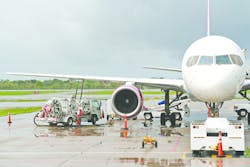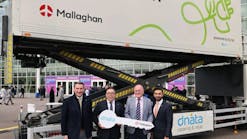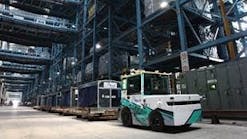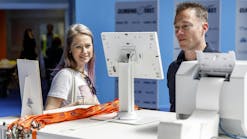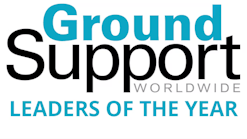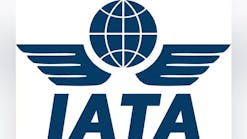Meeting Challenges of Aviation Fueling Training with Multi-generational Groups
Let’s face it; training takes time, money and effort. But where do we find the time? Where will we get the money? And effort; can’t people just learn how to do the job from hanging around the more senior personnel?
These are questions that apply to most any industry and role within that industry. The aviation industry, specifically aviation fueling, is no exception. So what is the solution?
Time
It is true that everyone gets the same 24/7, but with reduced staff and ever increasing demands, there just doesn’t seem to be time in the day to train anyone. Yet it is essential that each of our staff members have the proper training to do the job we require them to perform. As managers we expect professionalism with our personnel; however, professionalism requires investment. The starting point being the investment of time to provide effective communication and training methods to produce the desired outcome. This changing landscape causes us to rethink our strategies concerning training.
The late 1980s and '90s are delivering a new generation of young people coming into the workforce today that are hungry for information. One thing researchers have learned is that these younger workers long for information. Just ask anyone a question nowadays and the first thing they do is reach for their smartphone to learn the answer. This generation is known as the Internet Generation, iGen or Net Generation; a generation whose individual members are called Gen-Yer’s, digital natives, echo boomers or millennia’s. They are extremely adept in online life, which includes online training. However it has to be exciting, informative and memorable. No one wants to sit in front of a computer screen, tablet or smartphone for any length of time without being interested in what they are viewing.
Money
“Do more with less,” seems to be the phrase we often hear. With travel budgets being reduced, or cut, there just doesn’t seem to be any money for training. On the other hand, how much will the accident or incident cost? In aviation, particularly fueling, the cost of the accident, or incident, is always financial and that is certainly devastating. But even more devastating is when the cost is a limb, life or multiple lives. There is no amount of retribution that can replace those affected by an aircraft tragedy.
When an employee is asked to travel to attend training they are excited, enthusiastic and in many ways indebted to the company, however it is expensive and time consuming. Furthermore, the workload is increased for the remaining staff if the employer doesn’t have the redundancy in personnel. Often, training is delayed, or not addressed at all because there aren’t enough bodies to take anyone “off line” for any period of time.
Effort
Today’s business world can be a ruthless one. The aviation industry, in itself, is very unforgiving when it comes to lack of knowledge. Often times we do not take into consideration that the baby-boomer generation has had decades of hands-on experience in this industry. We sometimes expect the Gen-Yer’s to display the same (if not more) business sense, tenacity and expertise as their baby-boomer counterparts.
To help our younger workforce meet the growing demands and expectations set upon them, we must provide them with a type of training that will close that gap. The training should be fast, effective, seamless, streamlined, focused and independent of other factors that may delay them in reaching their goal within the specified time.
These changing demographics are presenting training challenges as employers try to bridge the communication gap that may exist in multi-generational workforces. Successful management of this new multi-generational workforce will require training that satisfies the needs and lifestyles of this diverse group.
Tribal knowledge can be rich and useful however, many times it is myopic and will not deliver both the “How” and the “Why” a task is to be performed. Gen-Yer’s want and need that information. Baby-boomers, holding management and supervisory positions in our organizations are delivering that training and tribal knowledge that must be passed on. This group values classroom-based, instructor-led training and, if given a choice over technology, will most likely choose to continue classroom-based training where they are most comfortable.
The Gen-Yer’s have never known life without the Internet, tablets and smartphones. They have instant information access and flexibility in their DNA. Immediate and continuous access to highly focused training, which can be quickly downloaded, becomes essential in retaining workers of this generation.
All employees deserve to be aware of the policies and procedures of an organization, but moreover they need to be clear on the reason those policies and procedures exist. To accomplish that effectively, there must be an effort to cover the required fuel handling training on all applicable subjects in a learning-centered environment; an environment that is hands-on, interactive and collaborative.
No longer is tribal knowledge enough, as it lacks standardization and does not set a clear expectation. It is important to remember that if you do not set that clear expectation for your team, each will take it upon themselves to do a task their own way.
Simulations and hands-on methods, with peer-to-peer collaboration will go a long way in bringing the multi-generational groups together. A one-size-fits-all approach to training will not get the job done, so consider a blended approach. Classroom training will most likely continue to exist, but could be supplemented with other technology to enhance acceptance and create a culture of acceptance and enthusiasm.
Solution
Today’s aviation fueling professionals, specifically those faced with training multi-generational groups in fuel handling and quality control, are seeking blended training methods to effectively reach all employees from baby-boomers to Gen-Yer’s and those in between. One suggested course of action is to combine classroom training with electronic digital tools. One such tool is revolutionary in the marketplace, and known as, Fuel Analysis Safety Tool (FAST). For example, fuelers and line technicians will participate in a classroom curriculum that focuses on fuel handling and quality control; specifically on how to ensure clean dry fuel reaches the aircraft.
Accompanying the classroom training, the employee uses a new electronic fuel analysis safety tool for fuel handling and quality control, in lieu of a “paper workbook” or “class manual.” Once the employee is actually conducting the task in real time, the electronic tool serves as a checklist, reporting tool, continual training tool and effectively acts as the required documentation for the completed task.
This combined method satisfies the needs of those employees who prefer traditional classroom training and those who are most comfortable with technology and instant information access. There are even additional bonuses for management such as the ability to view photo imaging of abnormalities in fueling systems, or samples, memorializing fuel test results and email alerts to abnormalities that require attention.
Instantaneous gratification is the society we now live in. To ensure our younger workforce meets the growing demands and expectations set upon them, companies can benefit from providing training that is delivered to bridge that gap between experience and expectation. Delivering what is needed in the method it will be best received is the path to success.
For additional information you may reach DeborahAnn Cavalcante, Aviation Training Academy, at [email protected].
